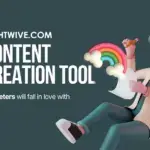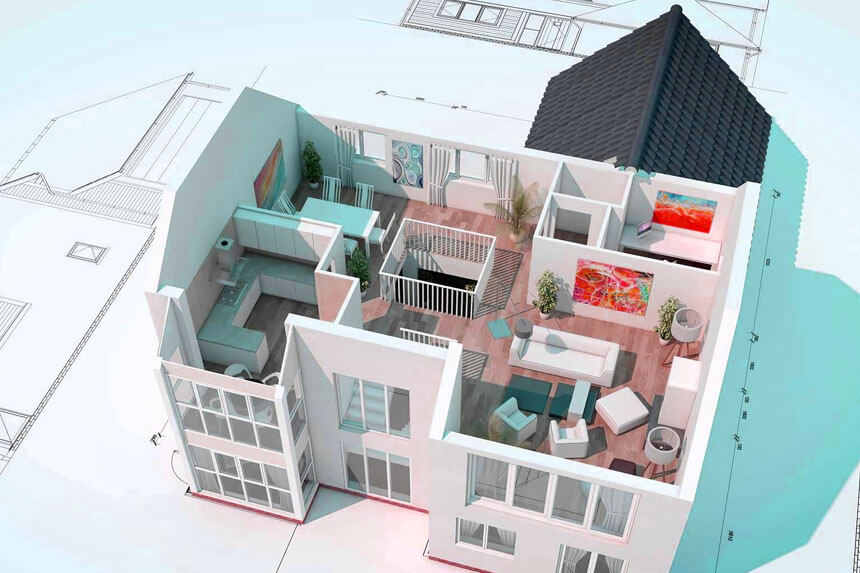Properties with 3D tours get 87% more views than those without , and listings with video receive 403% more inquiries than those without . 3d real estate animation transforms static imagery presentations into engaging experiences that help buyers visualize spaces before they’re built, reduce travel costs for agents, and accelerate sales cycles in today’s competitive market. As part of a comprehensive property presentation toolkit, these immersive experiences have become essential for modern real estate marketing.
- 3d Real Estate Animation
- What Types of 3d Real Estate Animation Serve Your Goals Better?
- How Much Time, Cost, and Tools Go Into a 3d Real Estate Animation Project?
- How Can You Use 3d Real Estate Animation to Boost Engagement and Approvals?
- How To Choose Between DIY Tools and Professional Services For 3d Real Estate Animation?
3d Real Estate Animation
3d real estate animation creates dynamic video tours of properties using computer-generated imagery. These animations show interior layouts, exterior designs, and surrounding environments with photorealistic detail, forming a crucial component of modern digital visualization strategies.
Unlike static imagery or basic floor plans, 3D walkthrough animations let viewers experience properties as if they’re physically moving through the space. You can showcase unfinished developments, highlight key features with dramatic camera movements, and present multiple design options without costly physical staging. Video content generates 3x more leads than traditional media , making 3D property visualization a powerful tool for multimedia marketing campaigns.
Real-time rendering technology now allows faster production than ever before. Modern software can create stunning visuals in days rather than weeks, giving you the flexibility to adjust designs quickly based on client feedback. This speed advantage helps you beat competitors to market while maintaining professional quality standards through advanced volumetric lighting techniques.
What Types of 3d Real Estate Animation Serve Your Goals Better?
Choose your animation type based on your specific marketing goals and target audience. Flythrough animation works best for showcasing large developments, while interior walkthroughs excel at highlighting lifestyle features within your real estate marketing suite.
Exterior animations present your building’s street appeal and surrounding context. These work perfectly for pre-construction marketing because they show how your development fits into the neighborhood. You can highlight landscaping, parking, and architectural details that photos can’t capture effectively. Flythrough animation takes viewers on a guided tour around and above the property, creating impressive marketing materials for social media and investor presentations.
Interior walkthroughs focus on room layouts, finishes, and lifestyle elements. These animations work best when you want buyers to imagine living in the space. You can add 3D people, furniture, and atmospheric details like sunlight streaming through windows with sophisticated lighting effects. Interactive virtual tour options let viewers control their own journey, spending more time in areas that interest them most.
Mixed animations combine exterior and interior scenes in one cohesive presentation. These comprehensive tours work well for luxury properties or large developments where you need to showcase everything from curb appeal to bedroom details. You can guide viewers from the street through the front door and into key living spaces, creating a complete immersive experience.
How Much Time, Cost, and Tools Go Into a 3d Real Estate Animation Project?
Expect to invest between $4,000-$12,000 per minute of animation for professional quality work. Basic projects start around $2,000 to $10,000 depending on the project requirements , while complex animations with multiple buildings can exceed $15,000. The global 3D animation market size is projected to reach $52.38 billion by 2032, growing at a CAGR of 11.7% , indicating strong industry growth and cutting-edge technology adoption.
Typical Production Timeline & Workflow
Most 3d real estate animation projects follow a four-week timeline from concept to final delivery. Week one covers planning and 3D modeling based on your architectural drawings. Weeks two and three focus on animation creation, lighting setup, and initial rendering. The final week handles client revisions and final rendering using render farms for faster processing.
Your animation workflow starts with providing CAD files, floor plans, or detailed sketches to the animation team. From there, we were able to study the surface area of each space and estimate the time needed to produce the real estate 3d animation video . Quality architectural drawings speed up production significantly, while rough sketches require additional modeling time that increases costs.
Rendering pipeline efficiency depends heavily on your project complexity. Simple interior scenes render much faster than detailed exterior environments with landscaping and atmospheric effects. Render farm pricing depends on scene complexity. For instance, scenes with reflective surfaces, mirrors, or dynamic effects like wind require additional processing power, which increases rendering costs . Advanced textures and subsurface scattering effects can significantly extend render times.
Common Software and Cost Factors
Professional studios typically use Maya or 3ds Max, which cost $255 a month, or $2010 a year for full licenses. Architectural visualization specialists often prefer specialized tools like Lumion, Enscape, or D5 Render for faster real-time rendering capabilities. AI could help speed up animation production by as much as 30% , indicating innovative marketing potential through automation.
Budget-conscious developers can explore newer AI-powered options. Real estate 3D rendering software tools tend to cost between $20 to $50 for an unlimited number of renders a month . Tools like InstantDecoAI start at just $14 per month for up to 8 images, scaling to an affordable $49 per month for unlimited image generations .
Cost factors include animation length, level of detail, number of camera angles, and revision rounds. Key elements influencing the cost include the availability of a script or even a draft, the final animation duration, frame rate, resolution, texture quality, level of photorealism, and the scale or surface area of the real estate premises . Rush projects typically cost 25-50% more due to overtime rendering requirements and premium photorealistic rendering demands.
How Can You Use 3d Real Estate Animation to Boost Engagement and Approvals?
Listings with virtual tours get clicked on 40% more than those without and homes listed with video tours sell up to 31% faster than those without video . 3d real estate animation dramatically increases your visual engagement across all marketing channels while providing interactive experiences that traditional photography cannot match.
Social media platforms favor video content in their algorithms, giving your animated content broader organic reach. Video accounts for 82% of all internet traffic , and platforms like Instagram and TikTok prioritize video posts over 2D photography. Your 3D walkthrough videos can generate shares, comments, and saves that boost your overall social media presence through compelling CGI animation content.
Government approvals become easier when planning committees can clearly visualize your proposed development. Animation helps non-technical reviewers understand your project’s impact on surrounding areas, traffic flow, and community integration. 3D animation for real estate can be helpful in presenting accurate information that addresses common regulatory concerns before they become roadblocks, while augmented reality integration offers additional presentation options.
Photorealistic rendering quality directly impacts buyer trust and engagement. 91% of consumers say video quality impacts brand trust , making professional animation a worthwhile investment for high-value properties. Poor-quality visuals can actually harm your marketing efforts by creating doubts about your attention to detail and professionalism.
International buyers particularly benefit from comprehensive virtual reality experiences. Animation eliminates geographical barriers, letting overseas investors evaluate properties thoroughly without expensive site visits. Attract international investors and remote buyers by sharing animations online through email, websites, and video conferencing platforms.
How To Choose Between DIY Tools and Professional Services For 3d Real Estate Animation?
Your decision depends on budget, timeline, and quality requirements. DIY software works for simple projects under $50,000 in value, while professional services suit luxury developments and complex marketing campaigns requiring realistic presentation standards.
DIY tools like Blender (free), SketchUp, or newer AI platforms let you create basic animations in-house. Blender’s active community ensures constant updates to make it a robust option for new users . However, expect significant learning time and potentially months to achieve professional-looking results. Your team needs 3D modeling skills, design sense, and technical knowledge to operate rendering software effectively using traditional computer-generated methods.
Professional studios deliver faster turnaround times and guaranteed quality standards. Every project we take on comes with a delivery date guarantee. With 600 3D artists on our team ready to step in, our clients never have to worry about delays . Studios also provide revision rounds, project management, and technical support that DIY approaches can’t match, ensuring your animation encompasses both aesthetic appeal and the broader context of property marketing (noting the polysemy where animation can refer to both entertainment cartoons and property visualization).
Consider hybrid approaches for medium-budget projects. Some studios offer template-based animations where you provide basic property details and receive customized videos at reduced costs. Moreover, one of the most significant advantages is using ready-made scenes or visualizations for animation. This allows for some cost savings in animation creation and positively impacts the speed of project completion .
VR real estate tour creation requires specialized equipment and software beyond basic animation tools. Professional services make sense when you need cutting-edge features like virtual reality compatibility, interactive elements, or integration with your existing marketing systems. The technical complexity and equipment costs often exceed what individual developers can justify for single projects.
Your choice ultimately comes down to opportunity cost. Calculate whether your time spent learning animation software could generate more value through other business activities. For most real estate professionals, partnering with experienced animation studios provides better ROI than attempting complex 3D projects in-house.
Bottom line: Properties marketed with 3D tours receive 87% more views and sell significantly faster than traditional listings. Whether you choose DIY tools or professional services, 3d real estate animation has become essential for competitive property marketing in 2025. Start with your budget and timeline requirements, then select the approach that delivers the quality your target buyers expect in today’s immersive digital marketplace.











